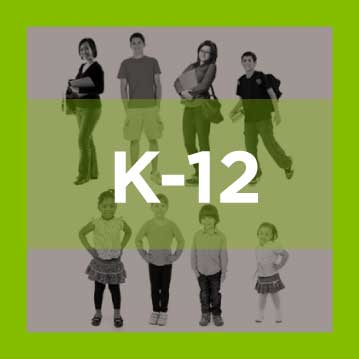Since the Every Student Succeeds Act passed in December 2015, we have been convening national experts and education policy leaders to discuss how best to capitalize on the opportunity for greater state leadership and educational improvement. These conversations have yielded some common recommendations for policymakers and education leaders as they continue ESSA planning and implementation.
To keep this conversation rolling, we asked a couple of state chiefs their thoughts on what is needed to move the needle on school improvement and student success generally. Some of the must-haves include a clear vision, buy-in from stakeholders, strong leadership, connections to the community and attention to equity.
Carey Wright, state superintendent in Mississippi, and Tony Smith, state superintendent in Illinois, took us through some of their thoughts on these issues. (For a more thorough guide for state school improvement efforts, see our new resource.)
What does a strong vision for education look like?
Carey values a vision that builds buy-in: “A good state vision for education should be aspirational yet attainable. Teachers, principals, parents, students and communities should all be able to see themselves in the vision and see their individual roles in helping the state achieve the vision.”
Tony notes the importance of context and linked public systems: “In Illinois, our focus is on the whole child, the whole school and the whole community. I think public systems that include and serve more people have greater long-term benefit.”
Building a strong vision helps stakeholders understand the principles guiding state and local leaders’ decisions, Tony notes. “People may not always agree with a decision; however, if they understand why a decision was made, then trust can build over time.”
Why is community context critical to school improvement?
“People talk about school improvement in isolation from all other systems and policies that are in play in every community. We need to understand the school in the context of the community,” Tony says, adding that each community has unique needs and assets. “Value the insights and capacity that local people bring to the table.”
How can state leaders build buy-in?
Both leaders agreed that trust is central to building buy-in. State leaders must “model what they say and deliver on their promises,” Carey says. “To trust me, you have to believe in what I say.”
Tony adds that “as state and local leaders, we shape the conversation and outcomes with the language we use.”
And trust goes both ways. Leaders at all levels must “believe everybody comes to work to do the very best they can,” engaging in what Carey calls “an asset-based mindset.”
How do you build strong leaders?
Carey’s experience is that “state leaders are most effective when they partner with district leaders and focus on building district leaders’ capacity to perform at their highest levels.”
To take on the challenge of improving lower-performing schools, she says state and local leaders must develop and retain highly effective school leaders who have the skillsets to lead school transformation. These school leaders need “sufficient autonomy” balanced with “guardrails and guidance from district leadership.”
“The work of school improvement does not happen in a vacuum,” Carey says. “The principal is the second most impactful factor in a school when it comes to improved outcomes, with the classroom teacher being the first.”
Why is equity important in school improvement efforts?
Tony says, “Depending on a few people to achieve success has not gotten us where we want to go.” He adds that “equity is the superior growth strategy to multiply potential and unleash possibility.”
Carey emphasized that “the same level of commitment demonstrated by our state’s legislature to improve literacy must be extended to support school transformation and promote equity.”
What do you want other state leaders and policymakers to know?
Tony: “Change happens when we (1) build a shared commitment to the why — social, civic and economic security; (2) relentlessly expect the same what — ensuring all children have the access and supports to thrive; and (3) remain wide open to the how.”
Tony believes in being “a principle-based leader, rather than a program-based reformer.” In his career as an education leader, he’s found that “guiding principles are more transferable and effective than introducing new programs or models from other contexts.”















